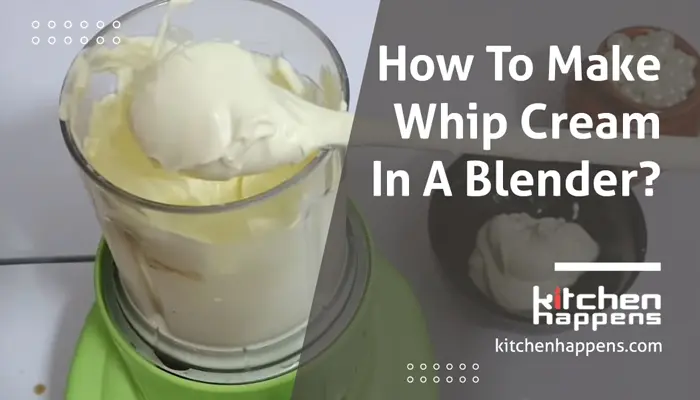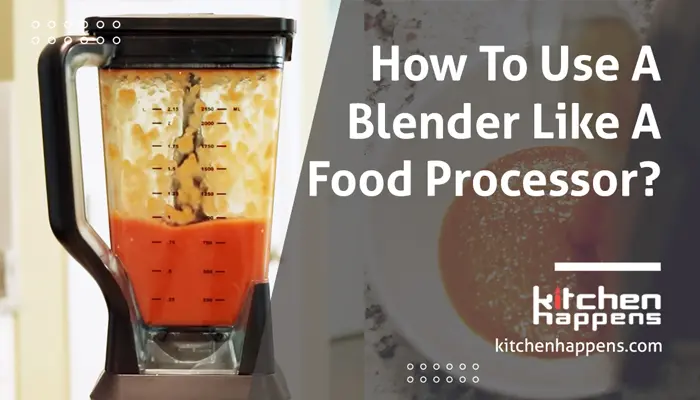It appears that fiber reduces the risk of developing various diseases, such as heart disease, diabetes, diverticular disease, and constipation.
Our health depends a lot on fiber, so it is extremely important. So we should keep fiber in our diet on a daily basis. Hopefully, you are doing this.
The kitchen appliance blender, however, is closely associated with the preparation of food on a daily basis. One of the biggest misconceptions about this machine is that it destroys fiber when you blend veggies or fruits.
Are you of the same opinion? Is fiber destroyed by blending? You may need clarification about this. However, there is no need to worry anymore. I’m going to tell you something that will give you confidence.
Because today I’m going to share does blending destroy fiber or not. Therefore, take a closer look at this complete guide to learning more.
First of all, let’s take a look at what fiber is, so we can understand why we need it so much.
What Are Fiber And Why Do We Need Them?
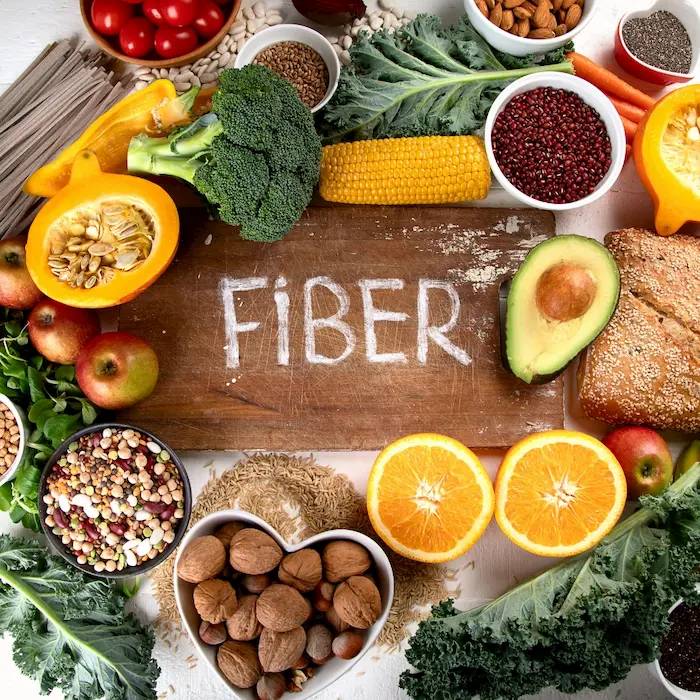
Fiber, also referred to as roughage or bulk, is the content of plant foods that your body can’t break down or absorb. As opposed to fats, proteins, and carbohydrates, which your body digests and absorbs, fiber is not digested. Rather, it passes through the stomach, small intestine, and colon relatively intact.
By regulating the body’s use of sugars, fiber helps reduce hunger and blood sugar levels.
Children and adults need 25 to 35 grams of fiber per day for proper health, but most Americans only consume 15 grams. Nuts, legumes, and whole grains are excellent sources of fiber.
So don’t delay anymore. Let’s find out our main focus: does blending fruit and veggie destroy fiber?
Does Blending Destroy Fiber?
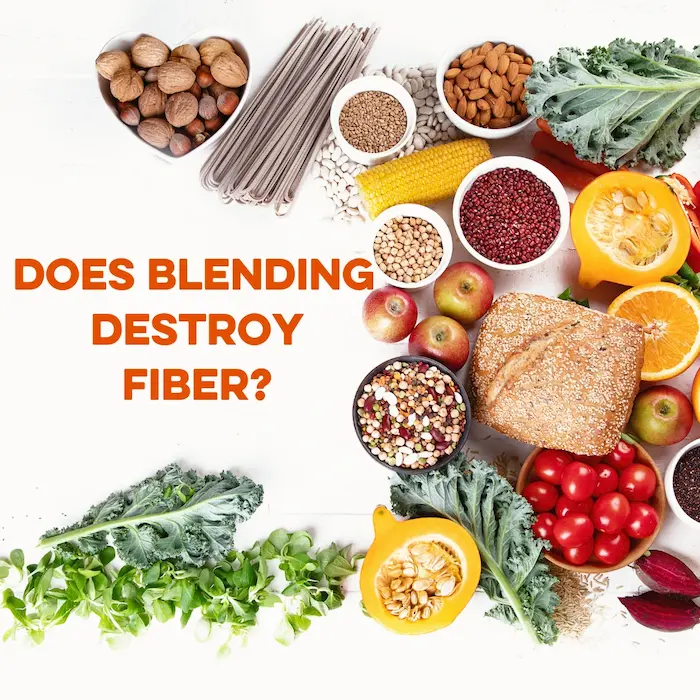
Whether you ask does blending fruit destroy fiber or does blending vegetables destroy fiber, the answer is the same. The simple answer is no; it does not. Using a high-speed blender might break down fiber, but you still get the same amount as the whole fruit.
You can actually absorb more nutrients from a blended smoothie because it’s easier for your body to digest. As a result, digestion is sped up, and you get a lot of health benefits.
When fruits are blended, their appearance and texture are only altered, but their nutritional value remains unchanged. It is common for people to blend fruit to make it more drinkable or spoonable.
It is best not to store your blended smoothies for a long period of time because long storage may result in nutrient degradation.
When stored at 41F for six days, pineapple, kiwi, strawberries, mango, cantaloupe, and watermelon can lose up to 25% of their vitamin-C content.
As well as fiber, when it comes to blending food, total nutrition is also taken into account, and whether the blending destroys the food’s nutrients or not is also crucial to know.
Therefore, now we learn what is nutrition and does blending destroy nutrients.
What are Nutrients and Why Do We Need Them?
In terms of nutrition, it means getting the nutrients your body needs to grow and stay healthy.
Nutrition keeps us strong and healthy and, at worst, prevents us from dying. With proper nutrition, we get the mental and physical workouts we need to meet developmental milestones. As a result, we cannot grow or reproduce.
Nutrition is the fuel our bodies need to break down food and rebuild cells and tissues, which is what metabolism is all about.
For a healthy body, seven types of nutrients are required: proteins, carbohydrates, fats, vitamins, minerals, fiber, and water. We need plenty of macronutrients, but we can get by with a little more micronutrients (vitamins and minerals).
Does Blending Destroy Nutrients and Fibers? This is one of the most widely asked questions. As we already know about fiber, but what about nutrients? Come along with me as we discover it together.
Does Blending Destroy Nutrients?
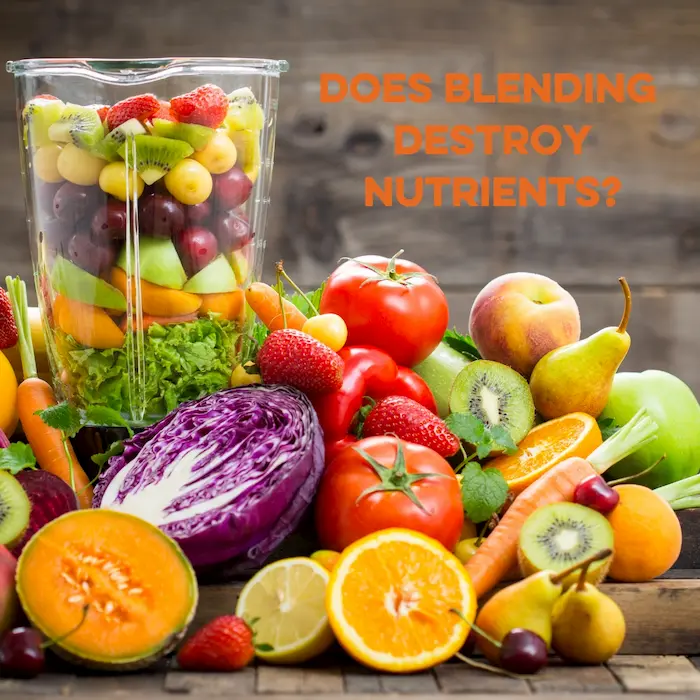
No fiber or nutrients are lost when fruits and veggies are blended. Blending fruits and veggies doesn’t destroy fiber or nutrients anymore.
There is a small amount of nutrient loss during blending. Obviously, this is not a reason to avoid blending your fruits and vegetables. It is similar to what happens when you cut fruits and vegetables and leave them out for a short time before blending them.
For example, if you cut or peel your fruit and leave it sitting for a few minutes, the cut area will become dark. It is a process of oxidation that destroys a small number of nutrients available in that region.
Does blending destroy fiber? What’s your opinion now after knowing more? Hopefully, you can guess blending does not destroy fiber from fruits and vegetables; we can now discover some health benefits of it.
Health Benefits Of Blending Fruits And Veggies
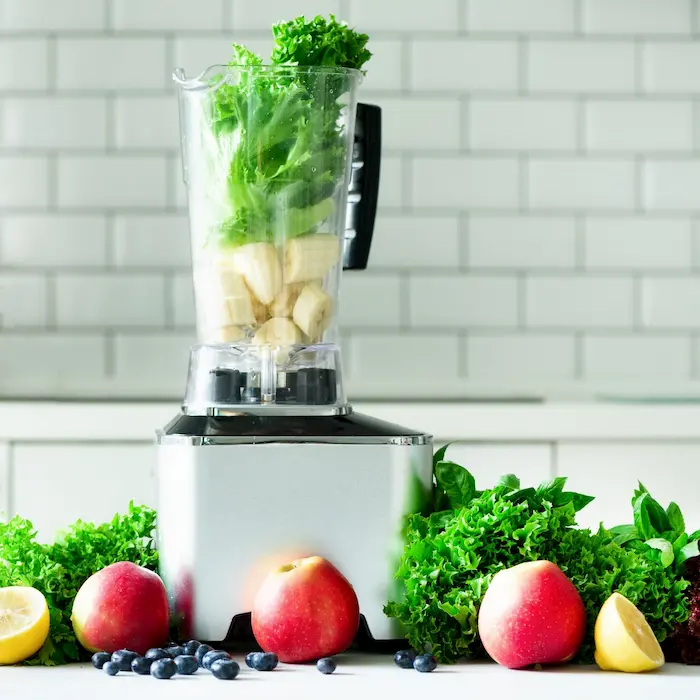
Blending fruits and vegetables is not only a delicious way to make food but also an easy and quick way to stay healthy.
Here are some benefits of blending fruits and veggies.
Easy Way to Add More Greens and Vitamins
Research has shown that blending can help us consume more vitamins and greens in our diet. The health benefits of green vegetables are well-known to most of us. You can mix raw vegetables such as broccoli, kale, and herbs using a blender to get enough greens for the day.
Great source of Antioxidants
Fruits and veggies are packed with antioxidants and nutrients. Blending can give you tons of nutrients that can improve your health, strengthen your immune system, and refresh your skin.
Help Regulate Hormonal Imbalance
You can regulate your hormones with certain foods like figs and blueberries. It’s easy and popular to blend fruits and vegetables for hormone imbalance. You can regulate your hormones naturally without any supplements or medications by making a smoothie at home.
Give You a Boost in Energy
Many types of diets can make getting adequate amounts of minerals, vitamins, nutrients, and antioxidants difficult. It is easy to get everything you need in a delicious smoothie by blending fruits and vegetables.
Keep You Going Until Your Next Meal
Your weight loss diet can be supported by drinking a mid-morning or mid-afternoon snack that contains fruit, vegetables, and other ingredients. Several fruits and vegetables contain natural fiber that is also good for your body and metabolism.
How Much Fibers Do Smoothies Have?
There is no doubt that smoothies have fiber! Now that we know that blenders do not destroy fiber, smoothies retain fiber from fruits and veggies in their whole form. Fiber content in smoothies depends entirely on what whole fruits and vegetables you use in the recipe.
You can get fiber from your smoothie if you add lots of fruit like raspberries and passion fruit. You’ll really increase fiber content if you make a green smoothie with kale, spinach, or other greens.
Approximately 15-30 grams of fiber can be found in an average 16-ounce fruit smoothie.
Hopefully, you got rid of your confusion about does blending smoothies destroy fiber or not. It is now time for us to learn how to make a smoothie that contains a high amount of fiber.
How To Make A High Fiber Smoothie?
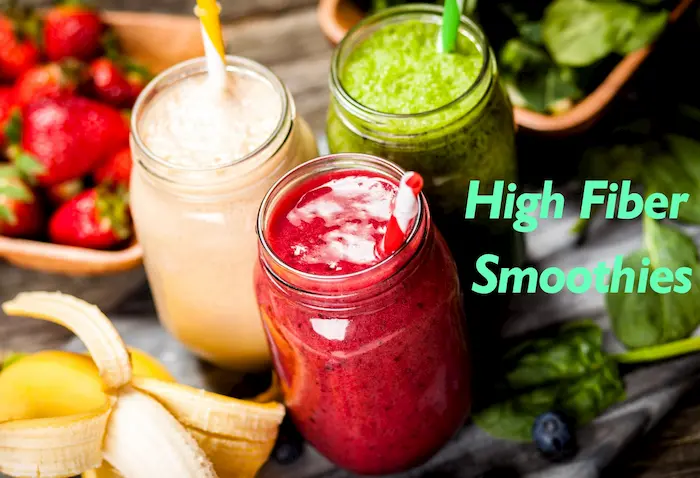
Since fiber remains intact during the making and digestion of smoothies, they can be a convenient way to get your daily fiber requirement met.
You can add fiber to your smoothie by including foods that are high in fiber, such as:
- Fruits
- Vegetables
- Legumes
- Whole Grains
- Nuts
- Seeds
Simply blend all of the ingredients together to make a high fiber smoothie that will give you good health! It’s a wonderful way to begin your day, even when you’re busy! Blend all of the ingredients until smooth and the ice has been crushed.
How to Reduce Fiber and Nutrient Loss When Blending Fruits and Veggies?

Smoothies lose their nutritional value after a certain period of time. The nutritional value of your smoothie will be reduced if you leave the smoothie for more than 20 minutes after blending.
Therefore drink your smoothie immediately after it’s made. If you store smoothies properly, they will usually last for 2-3 days in the fridge.
Although I don’t believe fruit is destroyed when blended, some people claim it is.
Whenever possible, use fiber-rich fruits and vegetables (and other fiber-rich ingredients) in your smoothie.
It is also possible to minimize nutrient loss by reducing the amount of time spent blending the ingredients. It has been argued that the heat from blender blades can negatively affect nutrients.
There is the possibility of vitamins A, C, D, and K being canceled out when they are exposed to heat.
Final Thoughts
How would you answer the question, Does blending destroy fiber or not? What do you think? I hope your confusion has been cleared up.
However, despite the rumors that blending destroys the nutrients that are found in fruits, this is not entirely true. If you don’t over-blend the fruit, you shouldn’t lose any of the fiber or nutrients in the fruit.
For maximum fiber and nutrient retention, consume your smoothie immediately or store it properly after it has been blended. You may also need to take into account using a slower blender or slower speeds when making smoothies and juices.
Frequently Asked Questions
How long do nutrients last after blending?
It depends entirely on the ingredients you’re using and how you’re storing your smoothie.
You can keep your smoothie in the fridge if you don’t intend to drink it immediately after blending it. That way, you’ll keep its healthy, delicious nutrients.
According to some experts, smoothies can be refrigerated for up to 24 hours without losing significant nutrients. To get the most benefit from your smoothie, we recommend drinking it soon after making it.
Does insoluble fiber destroyed by blending?
While blending fruit does not destroy fiber, it may lessen its ability to aid digestion. When you blend fruit, you also blend the pulp, which contains fiber. As a result, the smoothie will contain some insoluble fiber. Blending some fibers will make them absorb water better, while blending others will not.
Is it better to eat fruit whole or in a smoothie?
The best way to consume fruit is whole, rather than in a smoothie, as blending destroys nutrition and fiber and creates free sugars. Despite this, there are only minor benefits to eating fruit whole rather than drinking a smoothie, and you will still get a good amount of vitamins A, C, D, and K.


